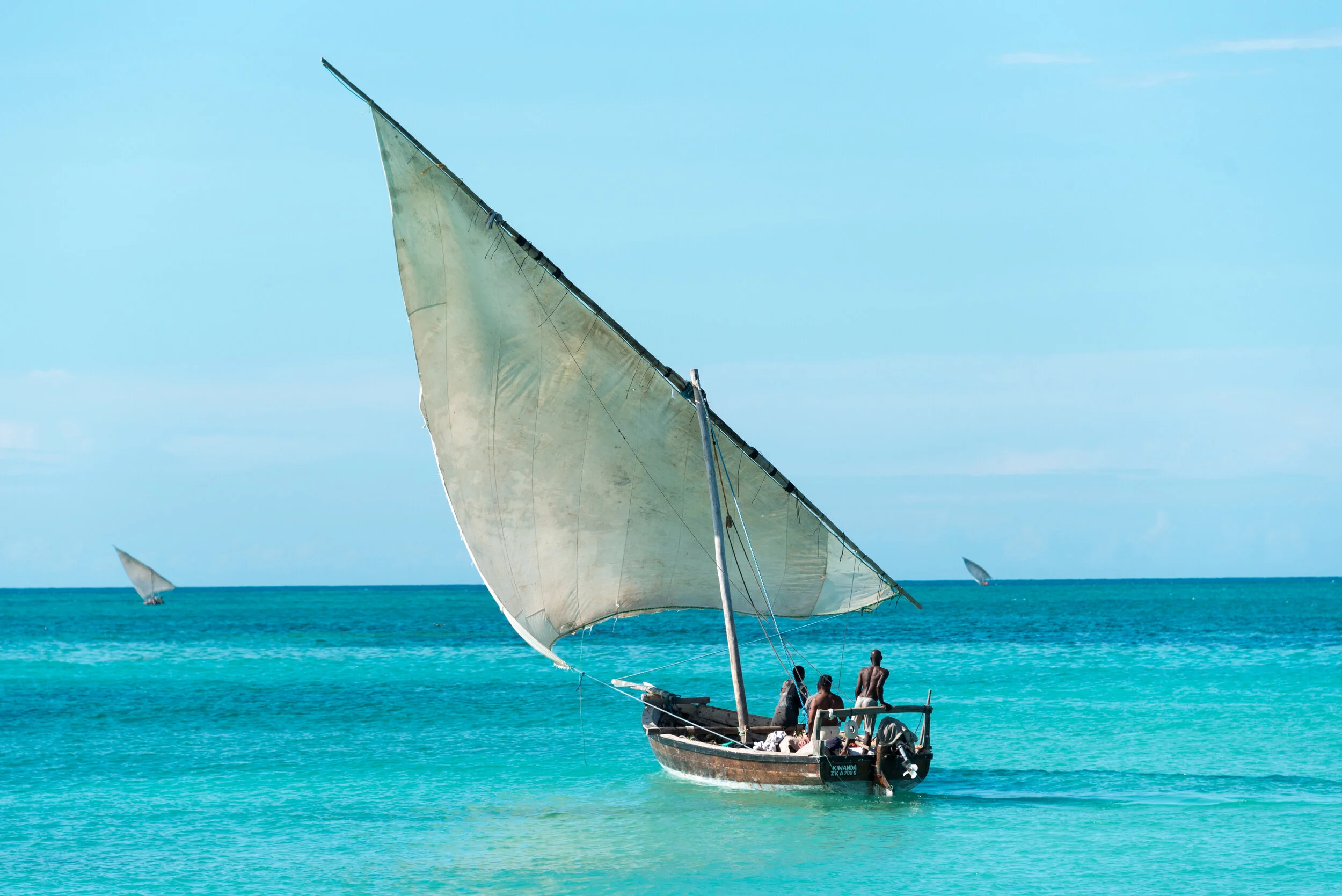Welcome to Africa…sort of.
Aside from evoking an aura of exoticism and adventure based solely on its name (Zanzibahhh!), I knew very little about what I’d be getting myself into as we put one toe into the waters of Africa, landing on the historical spice and trading island just off the coast of the mainland.
The shock of tropical weather had us dripping with sweat as we found our way to the hostel, entertaining Hellos (Jambo!) and Hakuna Matatas from more or less everyone we passed. As is customary upon arrival into a new region of the world, we promptly figured out a way to be ripped off, as “Fisherman George” led us to his night market food stall containing every kind of seafood you can imagine and more: lobster, calamari, kingfish, sweet potatoes, chicken, all cooked with unfamiliar combinations of spices that both smelled and tasted of luxury. Of course, following our noses and failing to agree on prices beforehand, we paid a King’s ransom for our seaside, styrofoam-plate meal…such is (travel) life.
The energy on the sea shore in Stone Town is intoxicating, as youth catapult themselves off makeshift trampolines (read: old tires) into somersaults, backflips, and twists, all the way into the rising tide. A potential Olympic gymnastics team in the making, the kids jumped higher, ran faster, and looked stronger than anybody we’d encountered in all of Nepal during the past month. Not to be outdone by their counterparts, another crop of youth gathered around the seawall, tempting fate as they flipped and dove into the dangerously shallow waters below. It all felt so foreign, new, and exhilarating, even if I was still stewing over Fisherman George’s daily market rate.
The following morning was reserved for exploration. Stone Town is a maze of winding alleys and pathways set up to disorient. Thankfully, it’s small enough that eventually you’ll pop out at the sea or on the main road to gain your bearings. Locals and tourists alike meander the coral-built town, with knick-knacks, curios from yesteryear explorers, coffee houses, juice shacks, and mansions turned hotels waiting to be happened upon. We were prevented from becoming too lost thanks to a local guide, a Kansas-ian turned Tanzanian expat, and best friend of my brother-in-law. While I am not sold that he was able to better navigate the maze of Stone Town, his company made for truly enjoyable exploration, watching him dialogue with the locals in Swahili, as I did my best to catch on to the phrases that I’d have at the ready next time I saw Fisherman George. We sampled delicious food and juices, traded some schillings for spices, watched a fish auction, and learned how and what Zanzibar came to be, how spices turned to slaves, and how the sultanate eventually loosened its grasp. The evening was capped off by rooftop sundowners and pre-fixe at the Emerson Spice Tea House, as the Islamic call to prayer echoed throughout town, bidding adieu to the sun and a day well spent.
After sufficient urban exploration in Stone Town, we set off north to Nungwi, a small fishing village and our paradise for the next two days. Packed into a dalla-dalla with nothing but locals, we made the 2-hour journey to turquoise waters and white sands, and found our place alongside honeymooners and middle-aged women looking for young love. While it’s nearly impossible not to be approached by locals or young Masai along the beach, our resort provided just enough buffer to relax and hear nothing but the crashing waves, see nothing but the clear waters and dhows headed to sea, feel nothing but the sun and the sand, and think of nothing but how good it was going to feel to dive in. Doing, feeling, and seeing nothing only lasts so long in my world, though, so thankfully the receding tides provide plenty of opportunity to explore what lay hidden in the coral. Starfish of all sizes and colors, sea cucumbers, crabs, octopus, and sea urchins lay scattered by the tides, providing a seashore Easter-egg hunt to satisfy any desire to explore.
With the late afternoon comes the rising tide and the cue for the fisherman to raise their sails and head out into the sea for the night. Dozens of traditional dhows slowly make their way in search of their catch, majestically raising a single sail as the vessels lean into the horizon. A real-life postcard, the romanticism of it all is undoubtedly lost on those living the reality of a long night ahead, unaware they are posing for the perfect shot from telephoto lenses, that they may one-day find themselves permanently displayed inside a living room or kitchen half way across the world.
In search of simplicity, we travel half-way across the world to do nothing, and to admire a life consisting of evenings at sea and days on the shores, all the while those we admire covet the extravagant lives that allow for trips to far off lands, and wonder why one would choose, of all things, to watch them.
As they (probably) say, the water’s always bluer…










